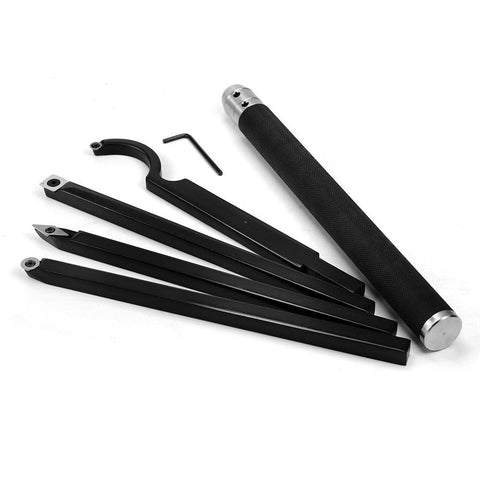Turning Precision: The Benefits of Carbide Wood Turning Tools
Carbide wood turning tools have revolutionized the craft of woodturning, providing woodworkers with precision, durability, and ease of use that traditional tools often lack. Made from tungsten carbide, these tools are designed to cut through wood with incredible efficiency, allowing artisans to create intricate designs and achieve smooth finishes. Understanding the advantages of carbide tools can enhance the woodturning experience, making it more enjoyable and productive.
One of the most significant benefits of carbide wood turning tools is their exceptional hardness. Carbide is much harder than traditional high-speed steel (HSS), which means that carbide tools can maintain their sharp edges much longer. This durability translates into less frequent sharpening, allowing woodturners to spend more time creating and less time maintaining their tools. For those engaged in high-volume or professional work, this increased tool life can result in considerable savings in both time and resources.
Another remarkable feature of carbide wood turning tools is their ability to withstand high temperatures. During the turning process, friction generates heat that can dull conventional tools quickly. Carbide tools, however, remain stable under these conditions, preserving their cutting performance even during extended use. This characteristic makes them particularly effective for turning harder woods or working at higher speeds, where traditional tools might struggle. The thermal resistance of carbide ensures that woodturners can achieve consistent results without the worry of overheating.
The design of carbide turning tools also plays a crucial role in their effectiveness. Many carbide tools feature replaceable inserts, allowing users to swap out the cutting edge when it becomes dull without needing to replace the entire tool. This not only enhances cost-effectiveness but also minimizes waste. Woodturners can keep their favorite handles and simply refresh their cutting edge, maintaining the tool's balance and feel. This innovation has made carbide tools more user-friendly and adaptable to various turning needs.
In addition to their practicality, carbide wood turning tools excel in producing superior surface finishes. The sharp, precise edges of these tools enable clean cuts, significantly reducing the need for extensive sanding or finishing after the turning process. This is particularly beneficial for woodworkers who prioritize aesthetic appeal in their projects, as a smoother finish directly contributes to the overall look of the final product. The ability to achieve excellent results straight from the lathe not only saves time but also enhances the overall quality of the craftsmanship.
Carbide tools are also versatile, making them suitable for a wide range of turning applications. Whether working on bowls, pens, or intricate spindle work, carbide tools can handle diverse tasks with ease. Their adaptability allows woodturners to explore various techniques and styles, encouraging creativity and experimentation. This versatility is especially appealing to beginners, as it allows them to use a single tool for multiple projects, simplifying the learning curve.
The ease of use of carbide wood turning tools cannot be overstated. Many woodworkers find that carbide tools are more forgiving than traditional tools, especially for those who are just starting. The design and function of carbide tools can help new turners achieve better results more quickly, boosting their confidence and encouraging them to take on more challenging projects. With carbide tools, the fear of damaging a piece of wood due to improper technique diminishes, making the learning process more enjoyable.
Despite their many advantages, carbide wood turning tools are not without their drawbacks. One notable consideration is the initial investment. Carbide tools often come with a higher price tag compared to HSS tools. While the long-term savings on sharpening and tool replacement can offset this cost, beginners or hobbyists might hesitate to make such an investment upfront. However, for serious woodturners, the benefits generally outweigh the initial expenditure.
Additionally, while carbide tools are incredibly durable, they can be more prone to chipping or breaking under extreme conditions or improper handling. Woodturners must be mindful of their technique, as excessive force or misuse can lead to damage. This brittleness can be a disadvantage for those who work with dense or abrasive materials, where the risk of tool failure is higher. However, with proper care and handling, these risks can be minimized.
The maintenance of carbide wood turning tools is relatively straightforward, but it does require some attention. While sharpening is less frequent, when it is necessary, it often requires specialized equipment or expertise. Users should be prepared to invest time in learning proper maintenance techniques to ensure the longevity of their tools. This commitment to maintenance is essential for maximizing the advantages that carbide tools offer.
In conclusion, carbide wood turning tools represent a significant advancement in the field of woodworking, providing numerous benefits that enhance both the craft and the experience of the woodturner. Their exceptional hardness, thermal stability, and ability to produce smooth finishes make them a preferred choice for many artisans. The versatility and ease of use further contribute to their appeal, especially for those looking to explore the world of woodturning. While the initial investment may be higher, the long-term advantages often make carbide tools a worthwhile addition to any woodworker's arsenal. By embracing carbide tools, woodturners can elevate their craft and enjoy a more productive and fulfilling creative journey.



